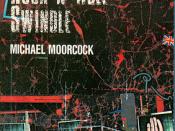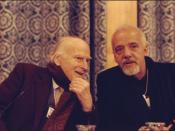Paulo Coelho teaches us just how true those metaphors are in his novel "The Alchemist". Through a physical journey, the shepherd boy Santiago learns about mental and spiritual journeys by gaining a deeper understanding and acceptance of himself and his relationship with the world he lives in. What began as a journey for worldly goods becomes a search for the treasures within. "The Alchemist" offers the notion that inner journeys are more than reaching the end, but are on-going, as long as we are willing to learn. Paulo Coelho employs the use of a linear structure and evocative imagery and symbolism to more effectively convey these ideas, and encourage students to reflect upon the importance of fulfilling our own "Personal Legend", a path crafted for us, but obscured by distractions.
The people Santiago meets along the way each helps him towards his goal of reaching the Pyramids.
However, even though he reaches the climax, Paulo Coelho uses the linear structure of the novel to better explain the never-ending sense of every inner journey. Santiago reaches the Pyramids, but he goes on to find the gold and jewels that he initially began his journey for, and travels back to the woman he loves. What seems to be the end of one journey is just the beginning of the next.
To encourage the readers to recognize the importance of finding our own Personal Legends, Paulo Coelho chose to write "The Alchemist" in third-person. Santiago is referred to as "the boy" throughout the book, and this gives us a detached sense, almost like we are on the journey with this boy and learning with him. Santiago represents each of us, and we walk along with him on his journey to fulfillment, reflecting on our own past experiences...


